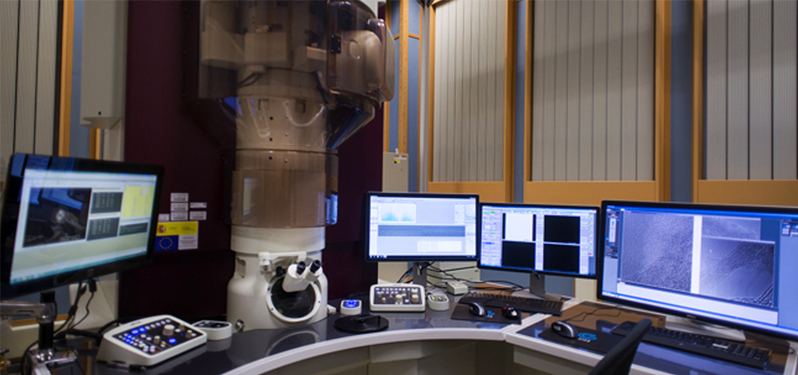The most powerful electronic microscope in the world arrives in Spain
There are only two others like him, in Germany and Japan. It is in the National Center of Electron Microscopy, in Madrid
See the atoms, even those of chemical elements as light as lithium or oxygen, to take full advantage of the materials of everyday life. From today it is possible thanks to the most powerful electronic microscope installed in Spain. It receives the name JEOL JEM GRAND ARM 300 cF and there are only two more like it in Germany and Japan. It is part of the Singular Scientific Technology Facility (ICTS) of the National Center for Electron Microscopy at the Complutense University of Madrid and will be operational within a week. "Before we saw atoms larger than sodium and now we can see all the lighter elements of the periodic system," explains José González Calbet, director of the National Center for Electron Microscopy. Distinguishing the oxygen present in the oxides, the lithium from the batteries or the carbon from revolutionary materials such as graphene is essential to explore all its possibilities. "The properties of the materials depend on how the atoms are put in.
If we see them now, we can propose improvements for the ones we already have," says Calbet. With this new microscope opens the door to more detailed studies of materials with countless applications, in particular, in the field of telecommunications and electronic devices or in the development of more efficient batteries and semiconductor materials.
Extraordinary Resolution
What makes this microscope unique is its ability to discriminate two separate points at a distance of 0.05 nanometers, that is, 10 million times smaller than half a millimeter. Calbet explains it with the following example: "If at night someone is situated at 10 kilometers with two matches lit, one in each hand, we will see them but we will not be able to distinguish if there are one or two matches".
Hence, the resolution is more important than the number of increases. Doing an exercise of scales, with this technology you could observe a chickpea on the surface of the Moon. The basis of an optical microscope is similar to that of an electron microscope: in the first, the light passes through the sample to be studied; in the second, it is replaced by an electron beam that focuses with magnets that act as lenses.
Getting a good image, however, is much more complex. "Everything influences, so you have to work in conditions of absolute tightness, the temperature can not vary more than half a degree and the Metro that passes near here generates electromagnetic fields that must be annulled", indicates Calbet.
A unique infrastructure
The new device it is added to another similar one, ARM 200 c-FEG, installed previously and with a spatial resolution of 0.078 nanometers. The two are complementary and together they will offer information on both the structure and the composition of the materials. The National Center for Electron Microscopy is thus consolidated as a reference with a total disbursement of 8.5 million euros since 2011, co-financed in large part by the different ministries that have assumed the competencies in Science (45%), funds from the Moncloa International Campus of Excellence (25%) and the rest due to FEDER funds, other ministries and research groups.
Maria Luisa Castaño, general director of Innovation and Competitiveness of the Ministry of Economy and Competitiveness, indicated during the presentation of the microscope that "If Spain wants to compete in Europe you have to make bets of this kind." Castaño also wanted to highlight the "generosity" towards the rest of the scientific community, which could benefit from the benefits of the new microscope. Rafael Van Grieken, Councilor for Education, Youth and Sports of the Community of Madrid, referred to the need to have "people capable of taking advantage of infrastructures", for which it is necessary to consolidate emerging groups, support the rest and encourage international collaboration. To this end, he promised that "the economic endowment will be the maximum possible for these facilities." Carlos Andradas, rector of the Complutense University of Madrid, Iwatsuki Masashi, vice president of JEOL, the company that manufactured the microscope, and Carlos Arribas, director of IZASA, the distribution company of JEOL.


